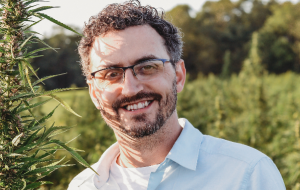
New York Farmers Are Poised To Plant Adult-Use Cannabis; Now All They Need Is A Market

Adult-use legalization is inching closer for New York and hundreds of hemp farmers are ready to produce cannabis as soon as they get a green light from the state.
But there’s something missing: a system of distribution from farm to market. We know that cannabis is destined for dispensaries. But how is it going to get there? New York currently licenses 40 medical cannabis dispensaries owned by 10 companies distributed across a sprawling state with 20 million residents. That’s not nearly enough. We need to expand by including smaller businesses as the state continues to embrace cannabis.
Gov. Andrew Cuomo included legalization in his annual budget for a third consecutive year, this time with more detail on taxation. Across the Hudson River in neighboring New Jersey, Gov. Phil Murphy just signed final legislation in the state’s adult-use legalization plan, putting pressure on New York to do the same.
Depending on which regulator you ask, New York is one or two years away from cutting the ribbon on the state’s first retailer for adult-use cannabis. That’s how long we have to establish an equitable supply chain linking upstate growers to city dispensaries for this massive retail rollout, to make sure ordinary New Yorkers aren’t left behind by the green rush.
Cultivation (Farm)
It all begins at the farm. I’m growing hemp on 200 acres where the THC levels are capped at 0.3% in accordance with federal requirements. There are hundreds of other New York farmers doing the same thing to serve the CBD market. I want to stress that we, the farmers, are ready to grow THC-dominant cannabis right now if the state allowed us.
New York is a leader in the CBD industry, and no other state has the existing legal infrastructure. New York also has an existing logistical farm-to-table network. When I’m not growing hemp, I’m growing vegetables and supplying them to New York City via Sweetgreen and Dig Inn. Those restaurants form an important link in the food chain. Without customers like that in New York City, we wouldn’t be in business.
The farm-to-table infrastructure already exists for our state’s thriving craft cannabis industry. All we’re lacking from regulators is approval to plant the right seeds.
Distribution (To)
Distribution is key to this entire effort. My goal is to create an equitable network between farmers, processors and dispensaries. The supply chain needs hundreds of small cultivators to supply hundreds of dispensaries in New York City. The New York Cannabis Growers and Processors Association, an organization that I lead as its president, believes that all communities should benefit from legalization, not just the big multi-state operators.
The best thing we could do to keep the supply chain fluid is to get rid of the state’s mandated distributor layer. The distributor middleman builds an artificial barrier for the industry, with unintended negative consequences against small entrepreneurs. Profits get squeezed, resulting in higher prices and fewer consumer choices. We want to create a decentralized cannabis industry in New York.
Retail (Market)
We have to establish an adult-use retail network in the year or so leading up to adult-use legalization, and we have one shot to get it right. The way that licensing is handled is crucial to building a retail foundation for the adult-use cannabis industry that benefits entrepreneurs, not just the multi-state operators who have established a record of consolidating smaller businesses. While that might be an attractive scenario for takeover targets, smaller entrepreneurs are getting crowded out of the market.
We need to expand rapidly over the next year or so from New York’s current tally of 40 dispensaries to a whopping 2,000 for adult-use, to make sure we have distribution spread throughout the state. We already have some patients living in cannabis deserts, where they drive hours to get their medicine.
License applicants must be ready far in advance of adult-use implementation, with their dispensary locations picked out, their letters of approval from the town or municipality, their mentorship programs established with local resources, their provisional licenses to get started, and then funding.
New Yorkers who want to apply for licenses need to feel like they’ve actually got a shot at fulfilling their dreams. Otherwise, the system will never work. The best way to ensure that the process keeps moving is for the State Legislature to mandate timing, by providing deadlines on the issuance of licenses.
The process is going to be hard. But we have to give these licenses out. We can’t just sit on them forever.
When I say that we will need 2,000 dispensaries, that might sound like a lot, but it’s only one dispensary for every 10,000 New Yorkers, which is pretty much the minimum ratio you would want, compared to other states with adult-use.
We have a long way to go in ramping up our tiny dispensary network to make a functional statewide retail web. But the good news is that we already have 700 hemp farmers who could convert to cannabis at the drop of a hat.
When I say we could do this tomorrow, I’m not exaggerating. The industry could plant one million pounds of cannabis tomorrow.
Allan Gandelman is the owner of the Head & Heal hemp and vegetable farm and president of the New York Cannabis Growers and Processors Association, representing New York businesses that produce hemp and cannabis products.
